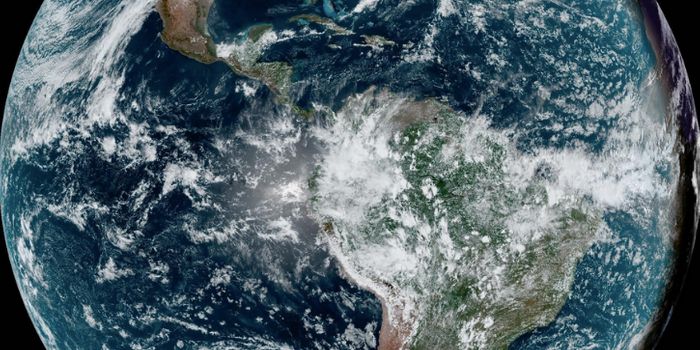Using Obstacles to Trap Rolling Microparticles in Fluid
In a recent study published in Science Advances, an international team of researchers led by Northwestern University have developed a method to trap rolling microparticles in fluid using obstacles comprised of stagnant pockets of fluid. This study holds the potential to use microparticles to navigate complicated landscapes, opening the door for advancing microfluidic applications and drug delivery systems.
Much like countless discoveries in science, this discovery was made almost entirely by accident, as the researchers were experimenting with microparticles and cylindrical obstacles and were surprised to observe the particle sticking to the rear of the obstacle, or trapping it, when they expected the particle to either go around the obstacle or collide with it.
“I didn’t expect to see trapping in this system at all,” said Dr. Michelle Driscoll, who is an assistant professor in the Department of Physics and Astronomy at Northwestern, and a co-author on the study. “But trapping adds a lot of utility to the system because now we have a way to gather up particles. Tasks like trapping, mixing and sorting are very difficult to do at such small scales. You can’t just scale down standard processes for mixing and sorting because a different kind of physics kicks in at this size limit. So, it’s important to have different ways to manipulate particles.”
For the study, the researchers experimented with microrollers, which are synthetic, microscopic particles capable of moving throughout a fluid environment. The microrollers used in these experiments exhibit a weak magnetic field, which can be used to control their direction. To alter the microroller’s directional movements, the researchers simply reprogram the magnetic field. While such experiments are traditionally carried out in microchambers free of obstacles, the team added obstacles to better simulate the human body.
“For true-to-life applications, you aren’t just going to have this system with particles sitting in an open space,” said Dr. Driscoll. “It’s going to be a complex landscape. You might have to move the particles through winding channels. So, we wanted to first explore the simplest version of the problem: One microroller and one obstacle.”
After adding the obstacles for both the laboratory experiments and computer models, that’s when the researchers discovered the trapping motion being exhibited between the particles and the obstacles.
“We watched the particle stop moving past the obstacle and kind of get stuck,” explains Dr. Driscoll. “We saw the same behavior in the simulations and in the experiments.”
The researchers observed the spinning microroller caused the fluid within the chamber to flow, which produced pockets, including pockets behind the obstacles placed by the researchers. The hydrodynamic properties of the fluid inside the chamber also created stagnant areas, as well, which ultimately trapped the microroller after it conducted a U-turn once it passed the obstacle. The researchers observed the fluid’s molecules exhibited random motion, also called Brownian motion, which “kicked” the microroller into the stagnant area, trapping it.
The researchers also discovered the obstacle’s size determines the length of time the particle stays trapped before breaking free, which the researchers found increasing the obstacle’s size equally increases the amount of time the particle stays trapped.
“Usually, Brownian fluctuations are destructive to experiments because they are a source of noise,” said Dr. Driscoll. “Here, we can leverage Brownian motion to do something useful. We can enable this hydrodynamic trapping effect.”
What new discoveries will researchers make about microparticles in the coming years and decades, and can this research be used to help improve applications such as drug deliver systems? Only time will tell, and this is why we science!
Sources: Science Advances, Northwestern Now
As always, keep doing science & keep looking up!









